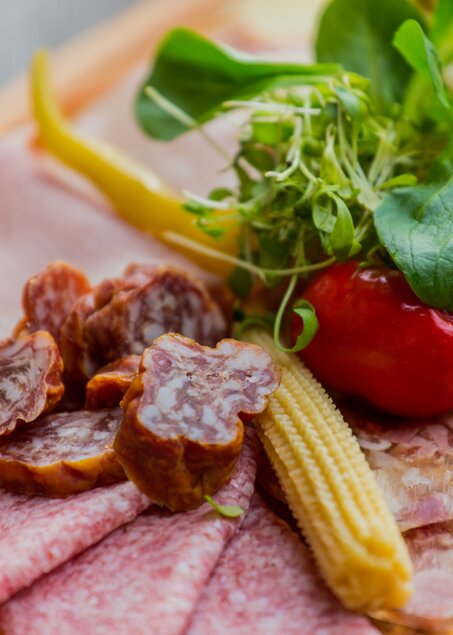

From the meadow to the plate
Social Wall
Fresh wild garlic, local parsley, aromatic chives – regional herbs add flavourful aromas to any number of dishes in Tyrolean cooking. Knut, the chef at the Ox & Ehrlich restaurant in Lermoos, tells us what herbalists should look out for and what you can do with the delicious herbs.
What do bread dumplings, wild garlic pesto and ‘schlutzkrapfen,’ a kind of ravioli, have in common? The Tyrolean and Bavarian specialities are prepared with fresh herbs from the region, which give them their delicious and unmistakable taste. And, of course, no holiday around the Zugspitze is complete until you’ve tried these little delicacies. After all, they simply taste best amid this wonderful mountain scenery. The Ox & Ehrlich restaurant has many of these regional dishes on its menu, and uses only fresh herbs from Tyrol or the Mediterranean region. The restaurant can be found in the Boutique Hotel Bellevue in Lermoos.


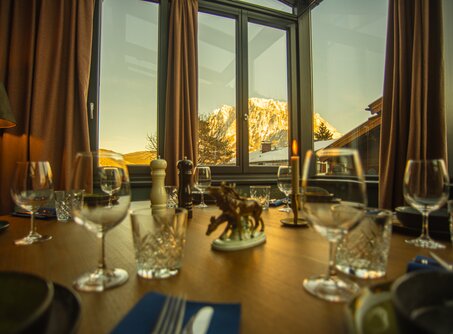
Social Wall
Knut, the hotel’s general manager, is also one of the two chefs at Ox & Ehrlich. He’s particularly fond of the plant-based foods at the restaurant, which have become his speciality. Around half of the dishes on offer are vegan or vegetarian, while the others contain fish or meat. ‘There’s something for everyone, then,’ laughs Knut, himself a vegan. He and his team are also very concerned about the environment. ‘We try to be as sustainable as possible. We only buy our meat and fish from sustainable and responsibly managed sources,’ he says. ‘Our vegetables are also both regional and seasonal. We mainly use what’s growing in Bavaria or Tyrol at any one time, for example Bavarian asparagus or Tyrolean berries. Around harvest time, they’re particularly crunchy and delicious,’ adds Knut.
Parsley, chives, and wild garlic are very popular ingredients in Bavarian and Tyrolean cooking. But herbs from Tyrol, which are less used in everyday cooking, also find their place in Knut’s kitchen, where, for example, he prepares dumplings and pesto from nettles. Knut also enjoys cooking with Mediterranean herbs like fresh thyme and rosemary. Herbalists won’t find these in the Tyrolean forests, but they can still be combined very well with local dishes. ‘You could, of course, go and pick well-known herbs such as dandelion or lovage in the woods yourself,’ says Knut, who himself loves to collect herbs in the vast forests around the Zugspitze.
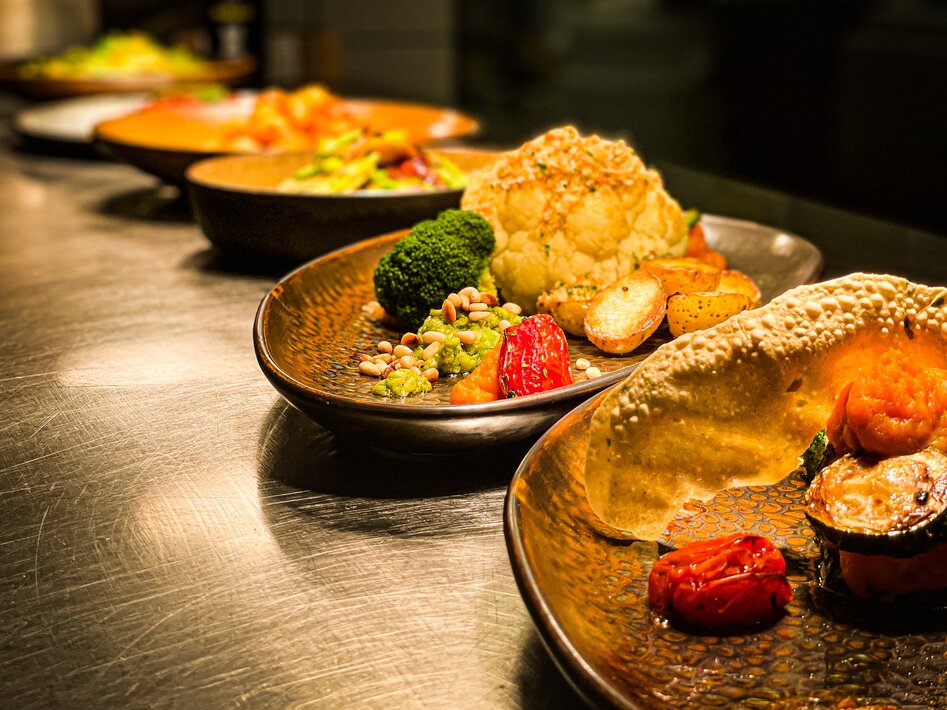
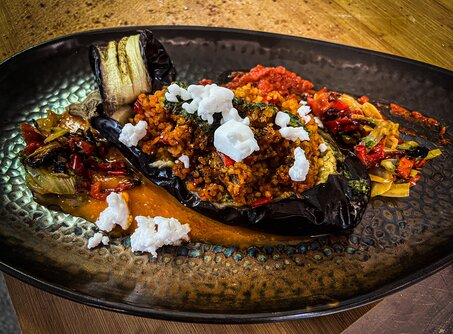
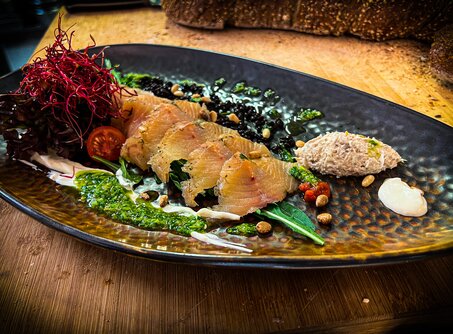
Social Wall
However, the curious shouldn’t set out in search of wild herbs without any prior knowledge, as there’s the considerable risk that you might make a mistake and pick something poisonous without realising. Wild garlic, for example, is very popular but looks confusingly similar to the poisonous lily of the valley or meadow saffron. If you’re undaunted, though, it’s worth knowing that the tourist information in Lermoos offers guided herb walks, on which you can find out about all the local herbs, plants, and other seasonal specialities. And it costs nothing if you’ve got the guest card.
Knut’s favourite herbs in Tyrol, by the way, are wild garlic, chives, and parsley. ‘They taste best fresh, of course. The aroma’s just different,’ he says.
So, had your appetite whetted by all these delicious dishes and aromatic herbs? If you’d like to bring the taste of Tyrol home, you can try recreating Knut’s wonderful recipe for asparagus and wild garlic dumplings. Rounded off, of course, with regional herbs.
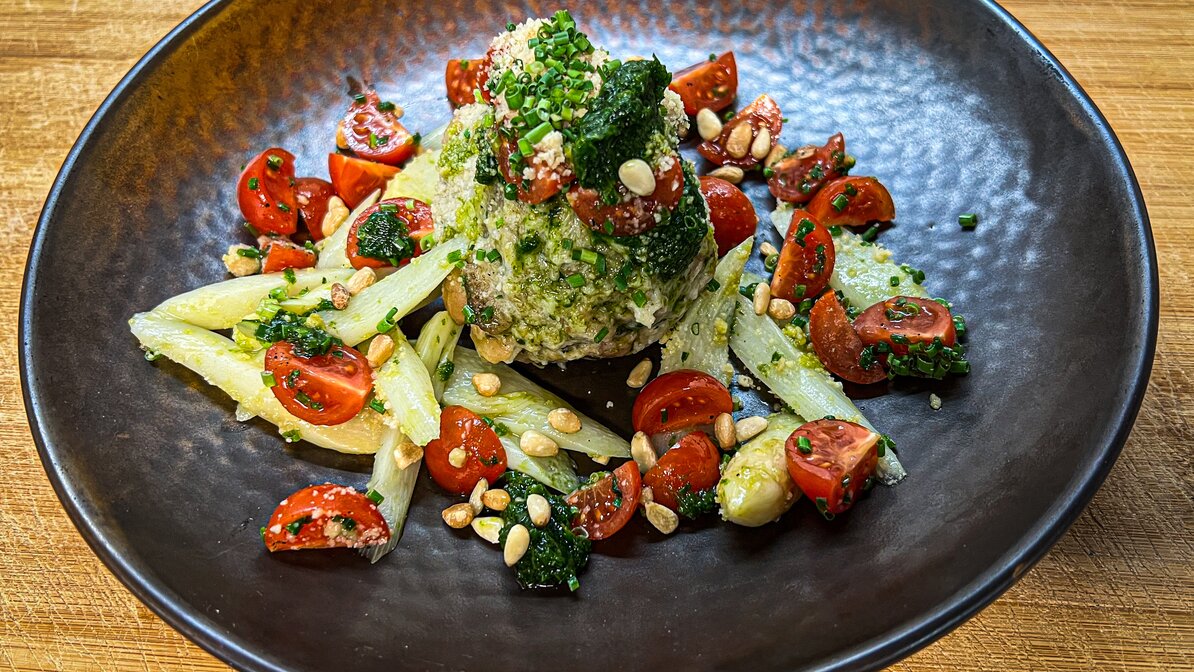
Social Wall
Categories
You may also be interested in ...
Geteilte Urlaubsfreude ist doppelte Urlaubsfreude! Unsere Social Wall ist ideal zum Austausch von unvergesslichen Erlebnissen und für ganz persönliche Einblicke in die Tiroler Zugspitz Arena.

